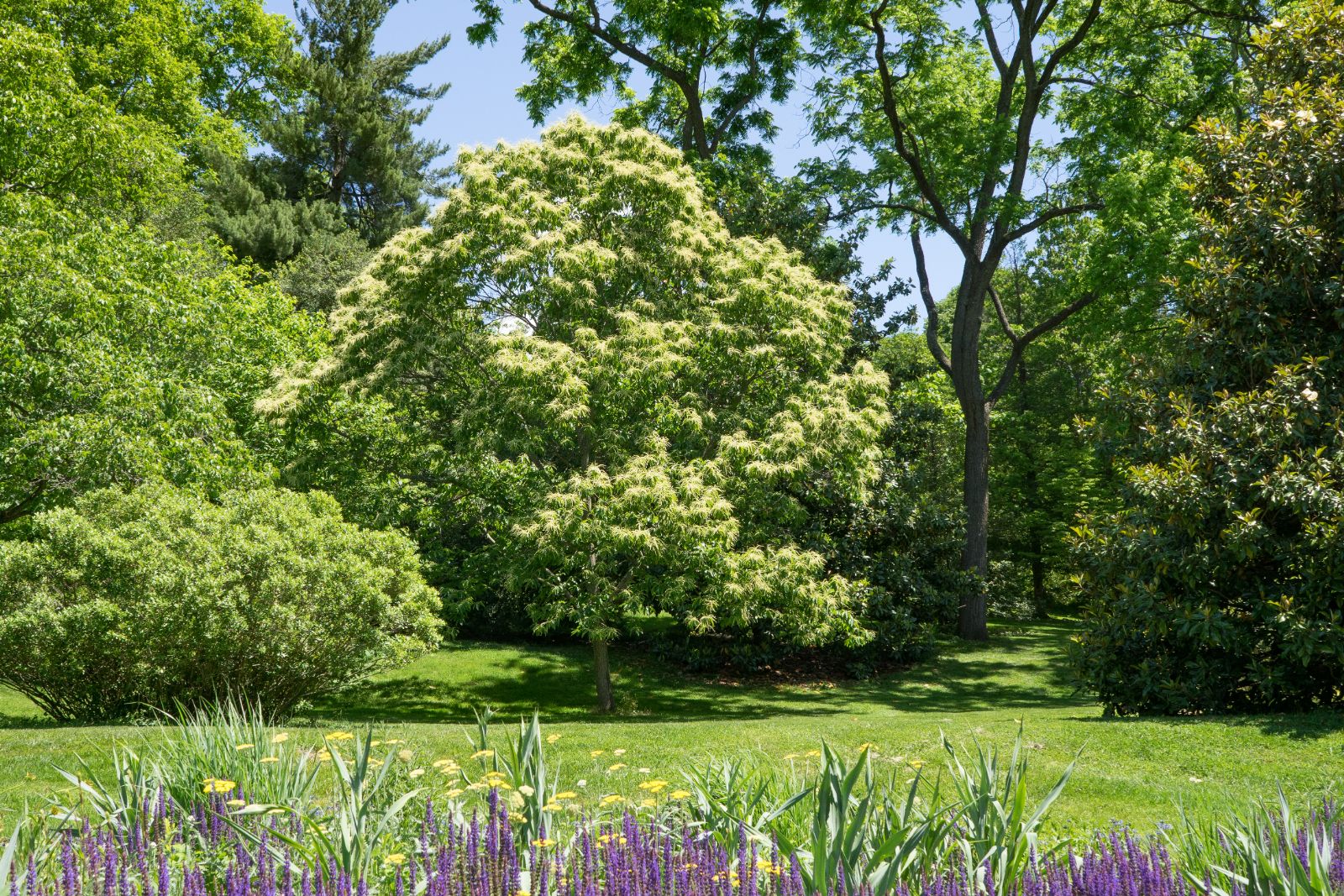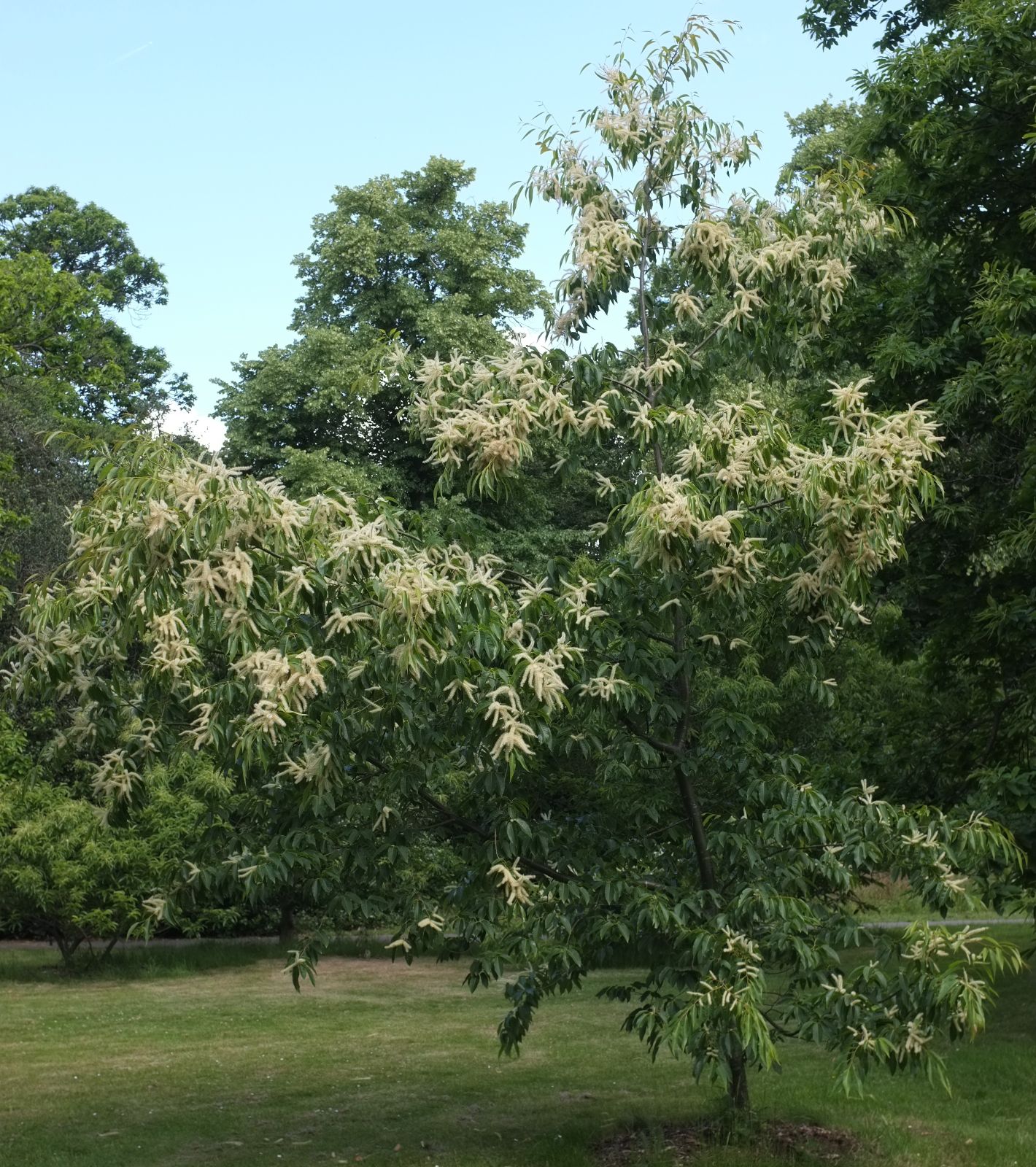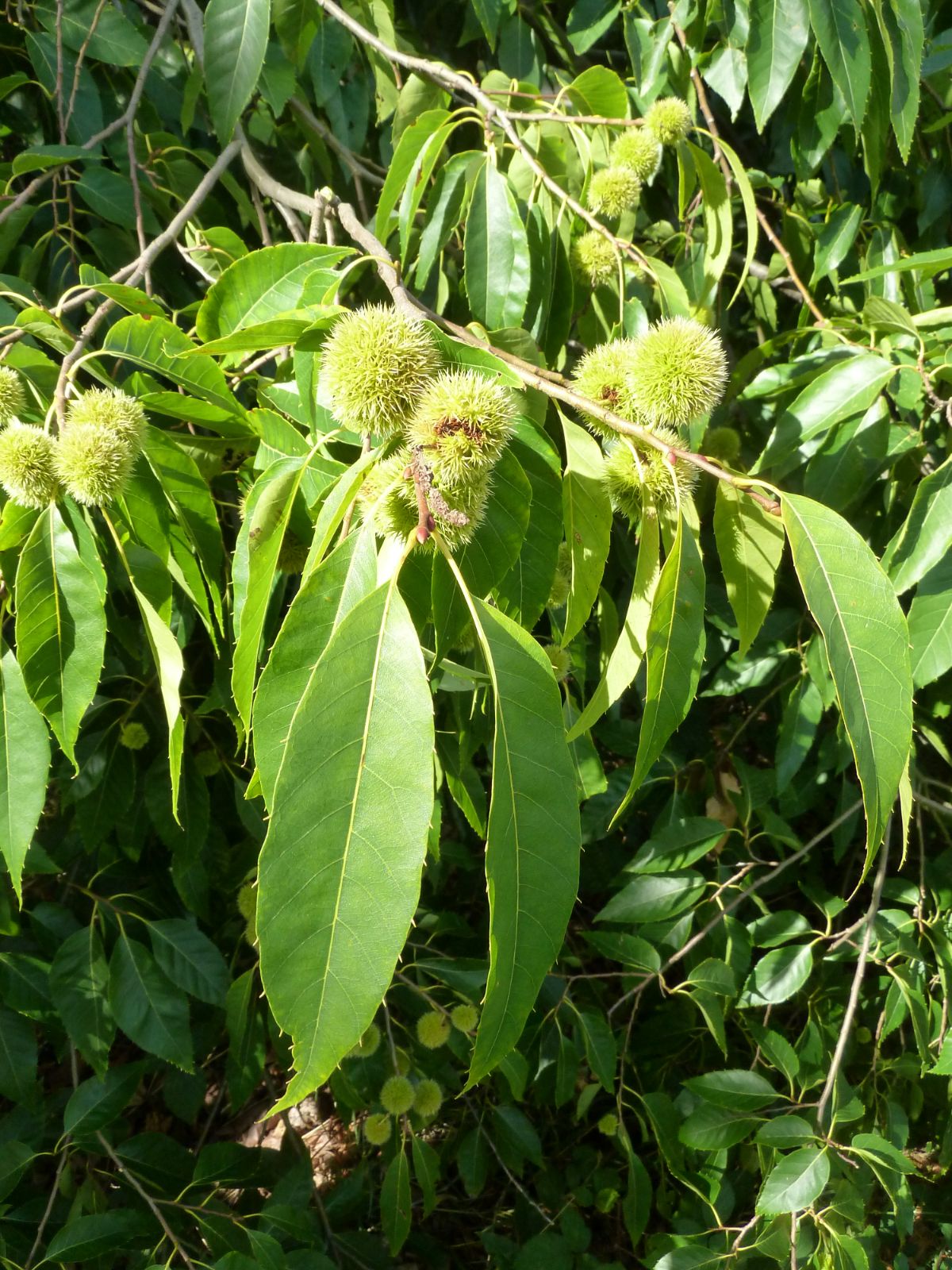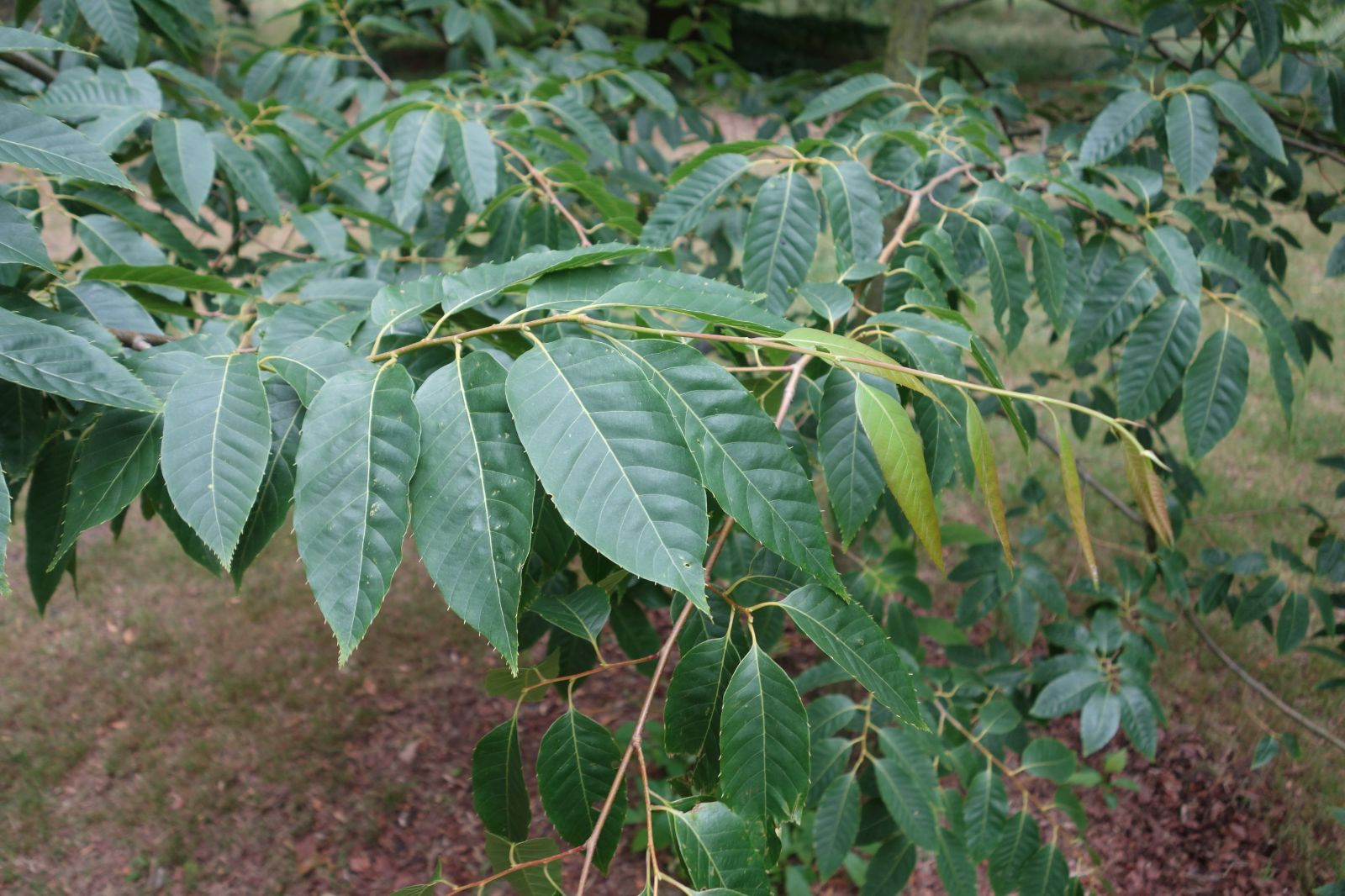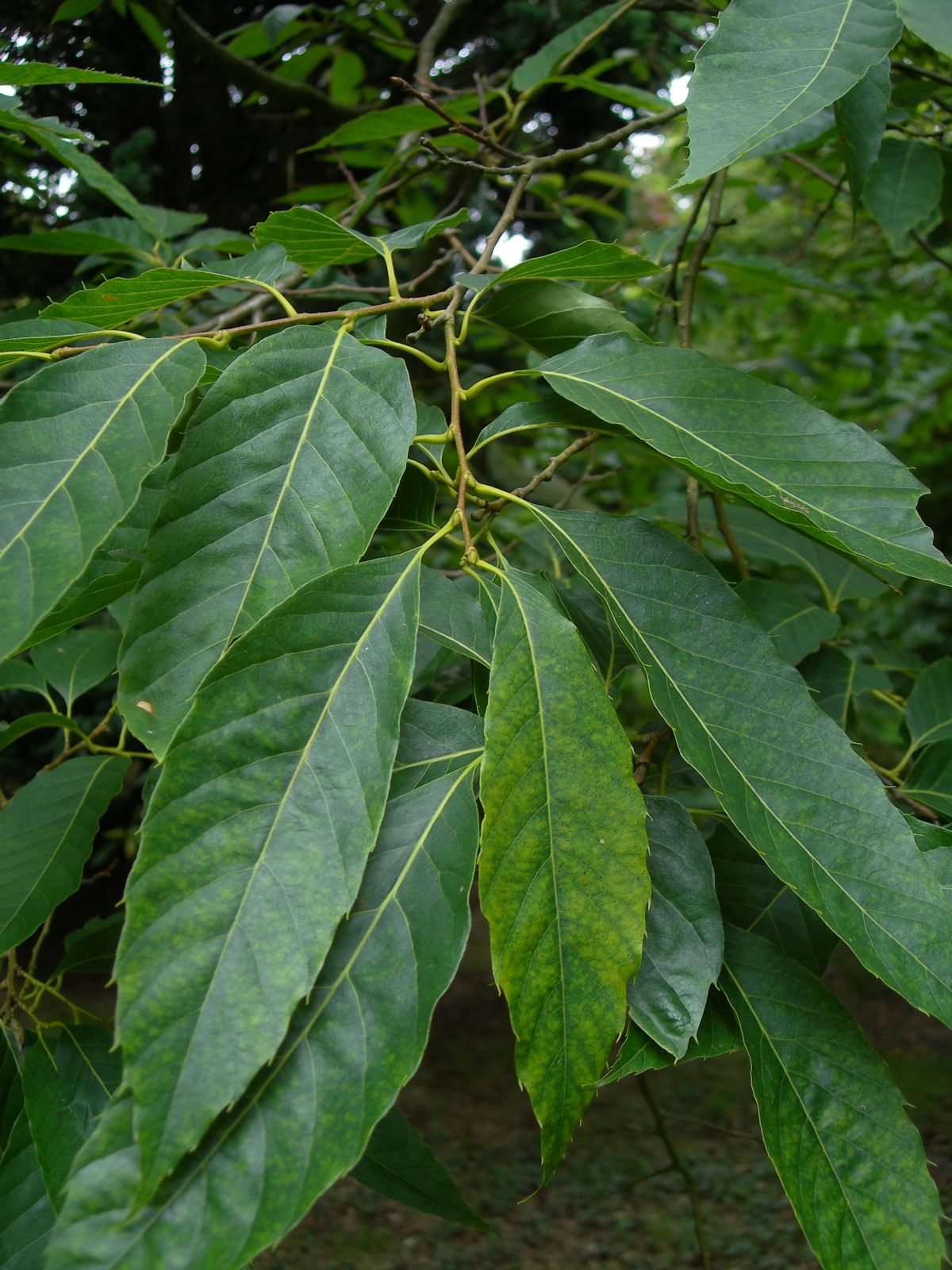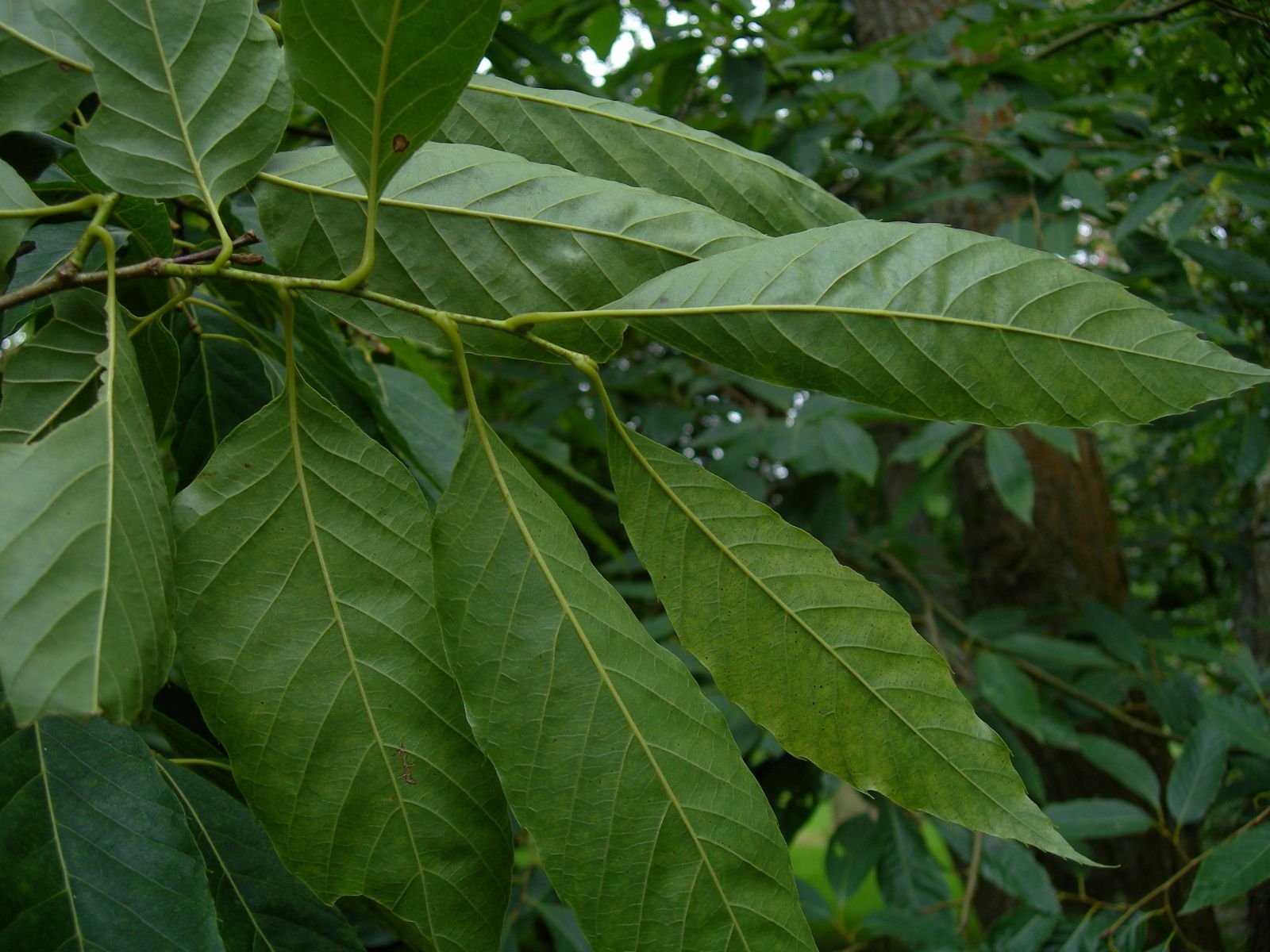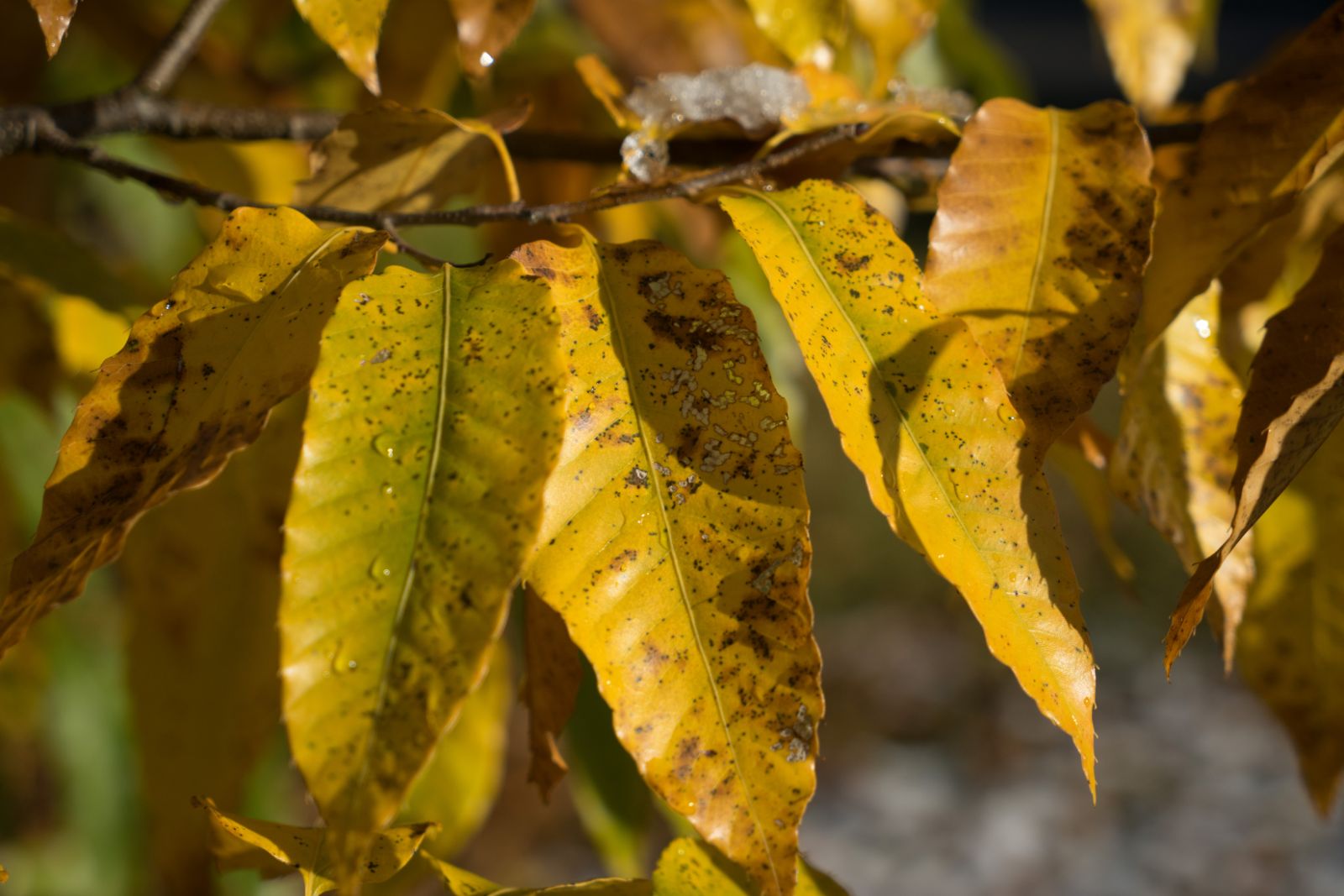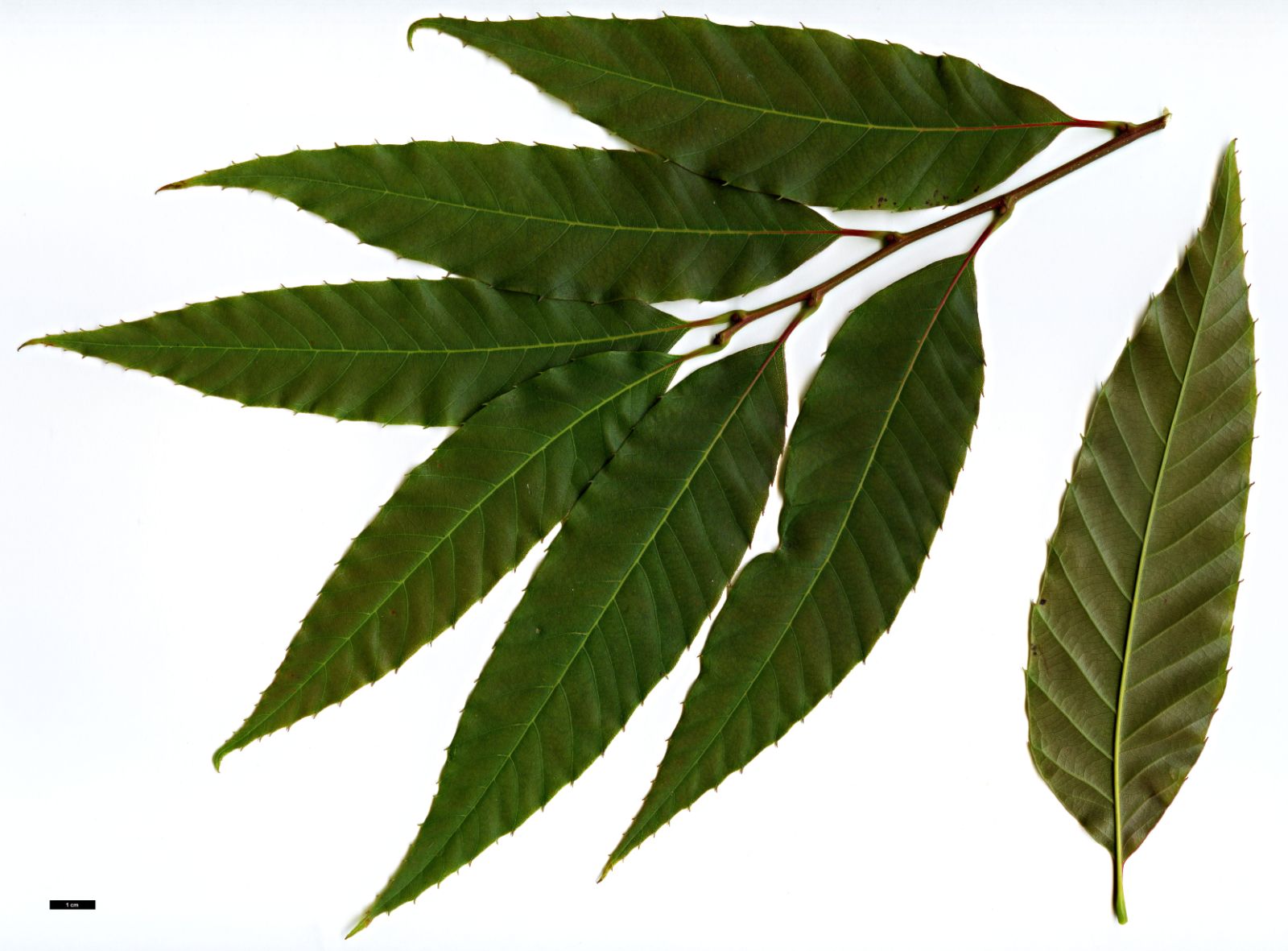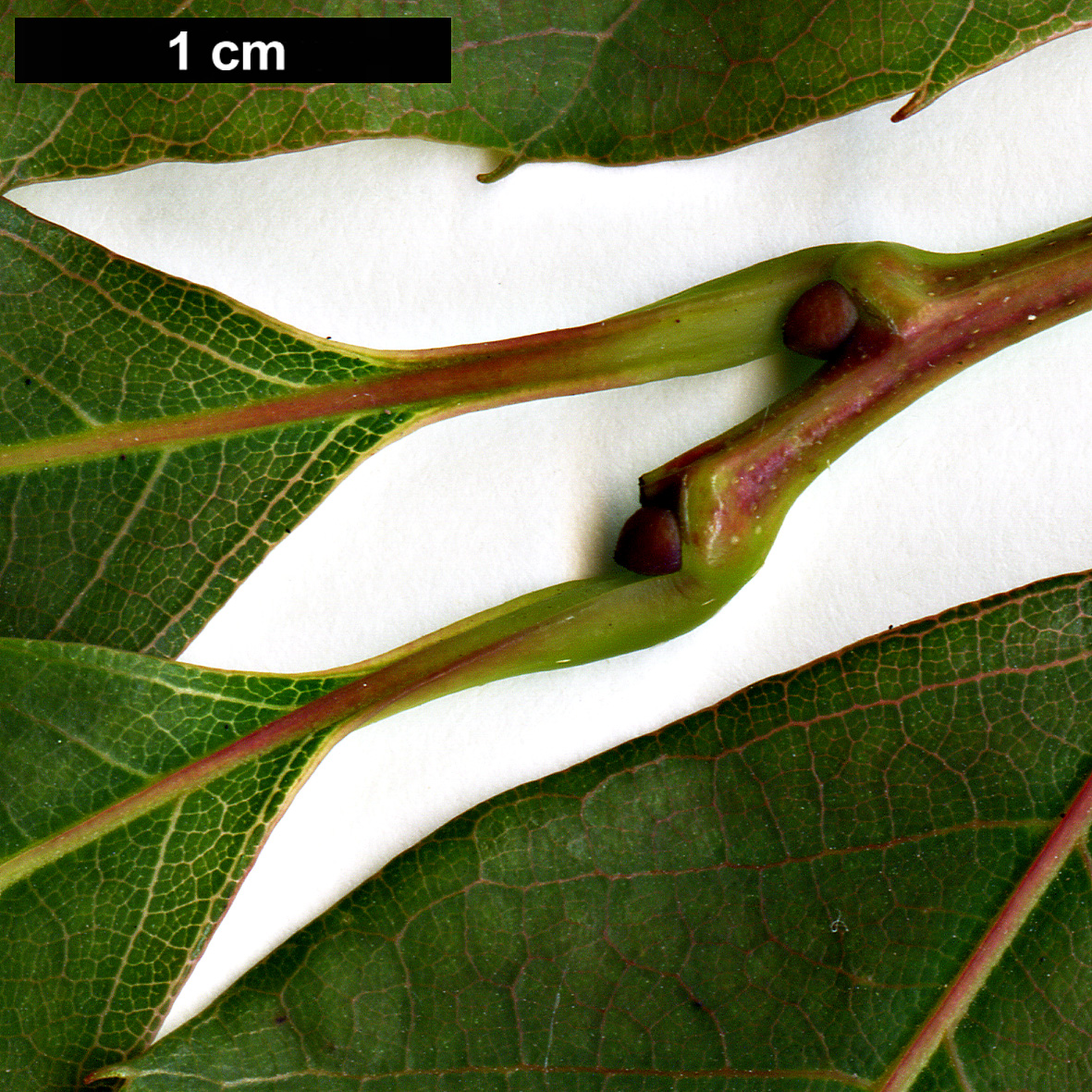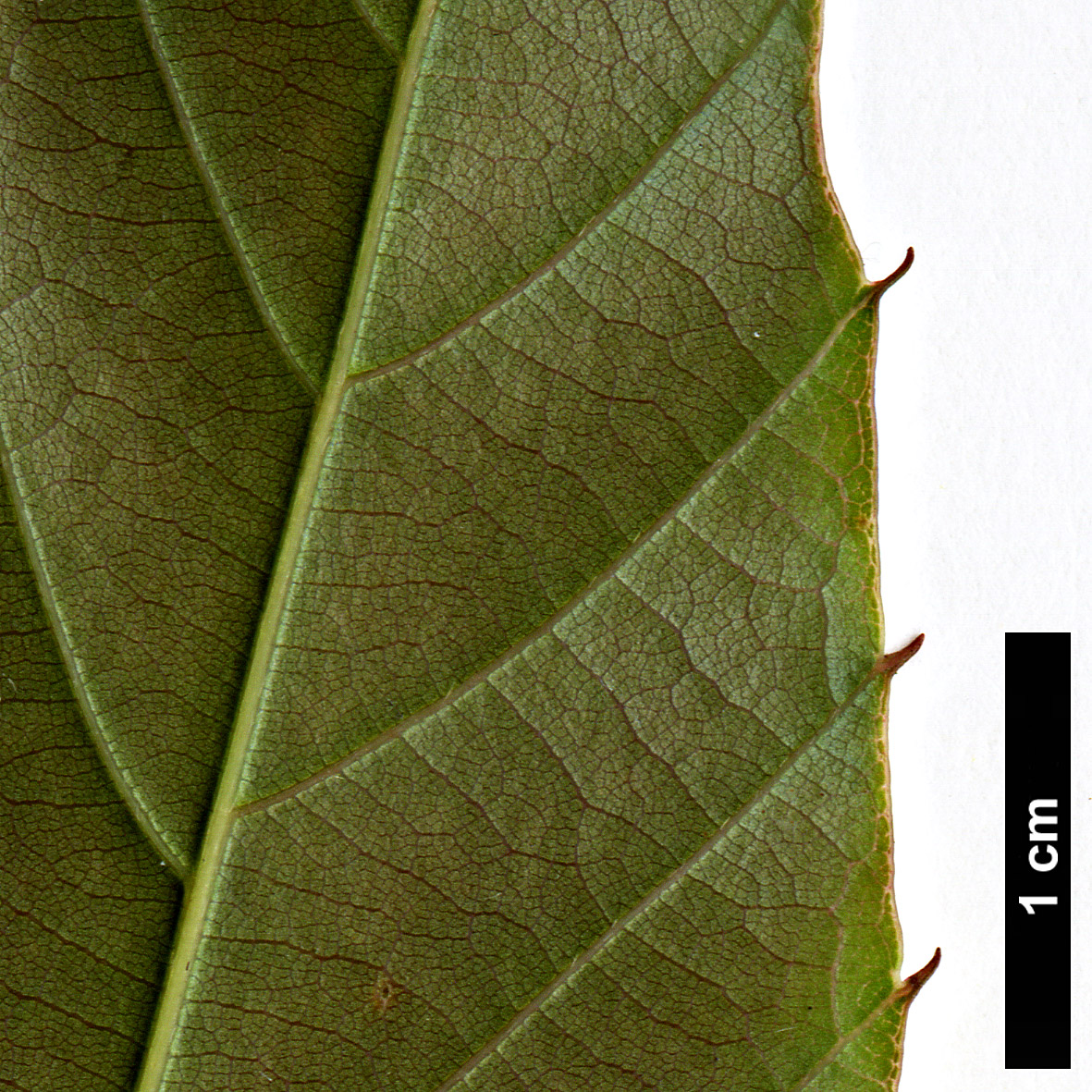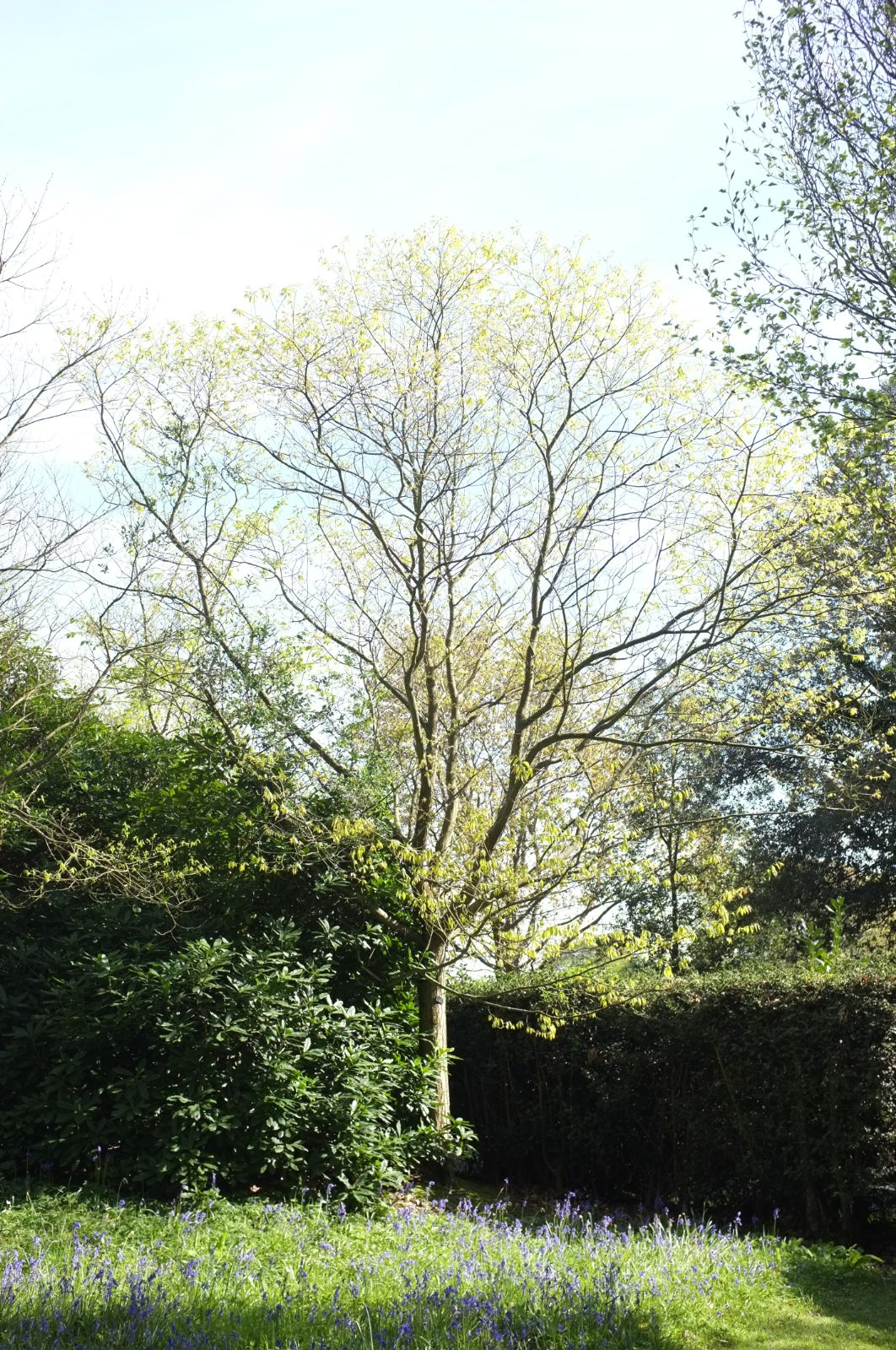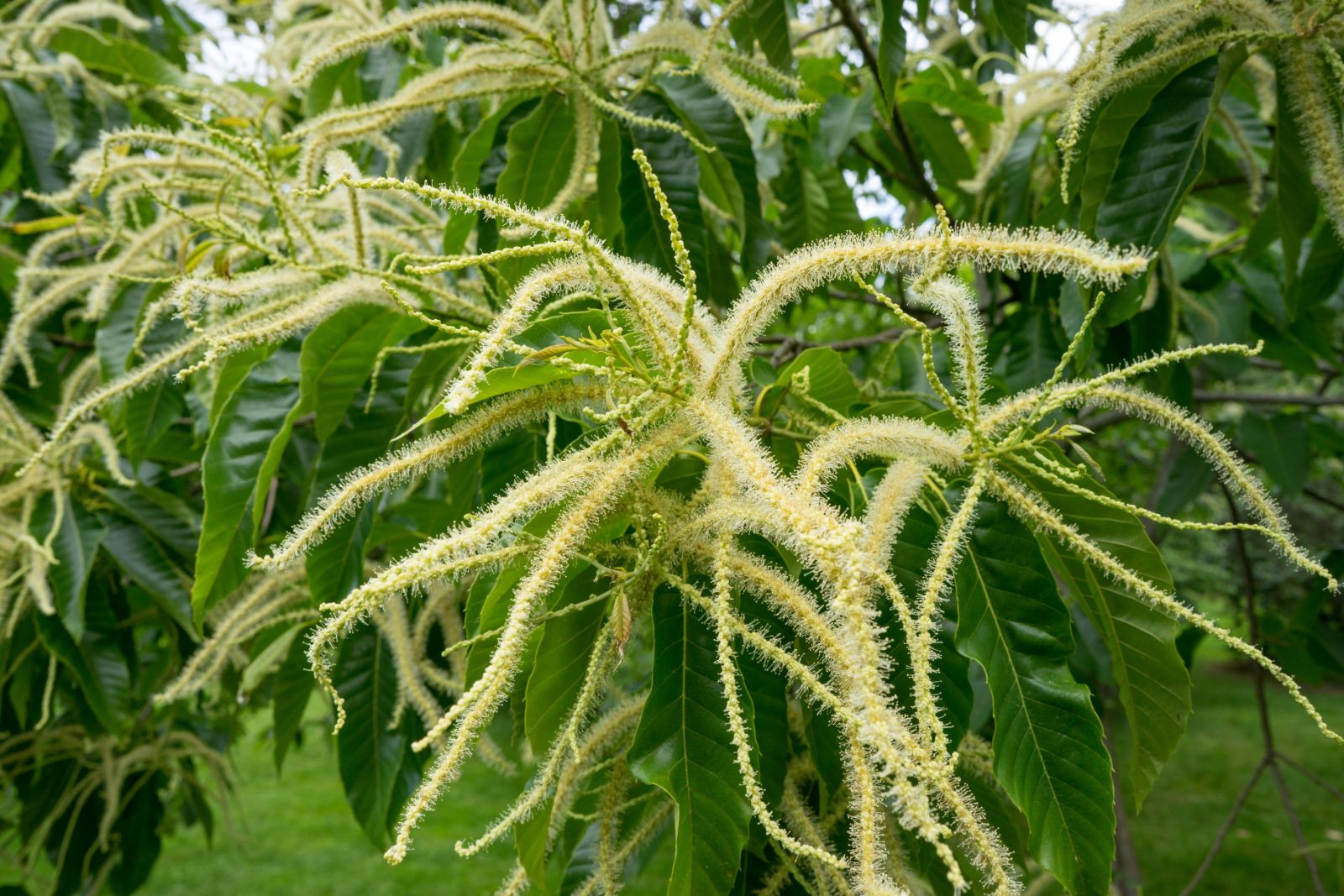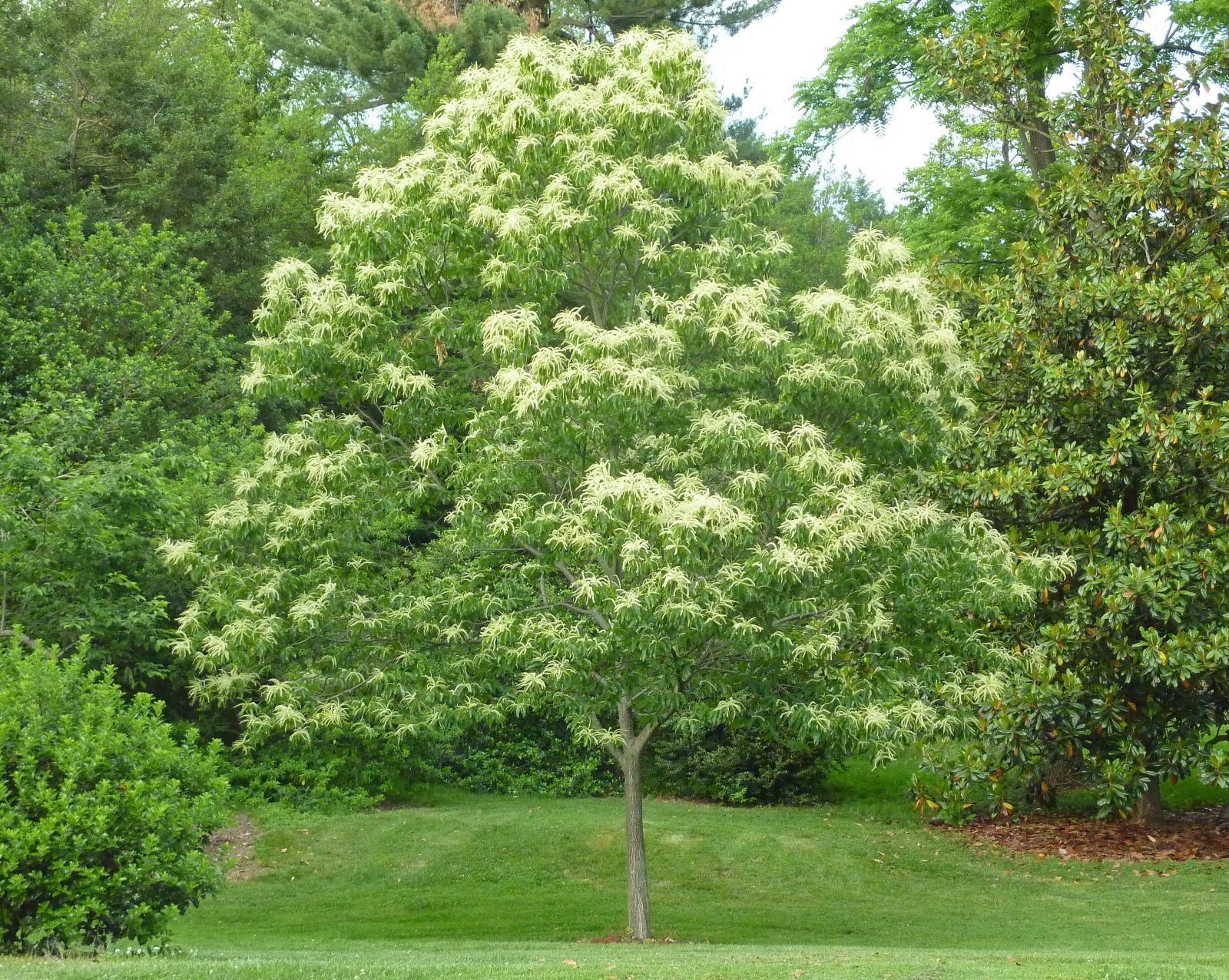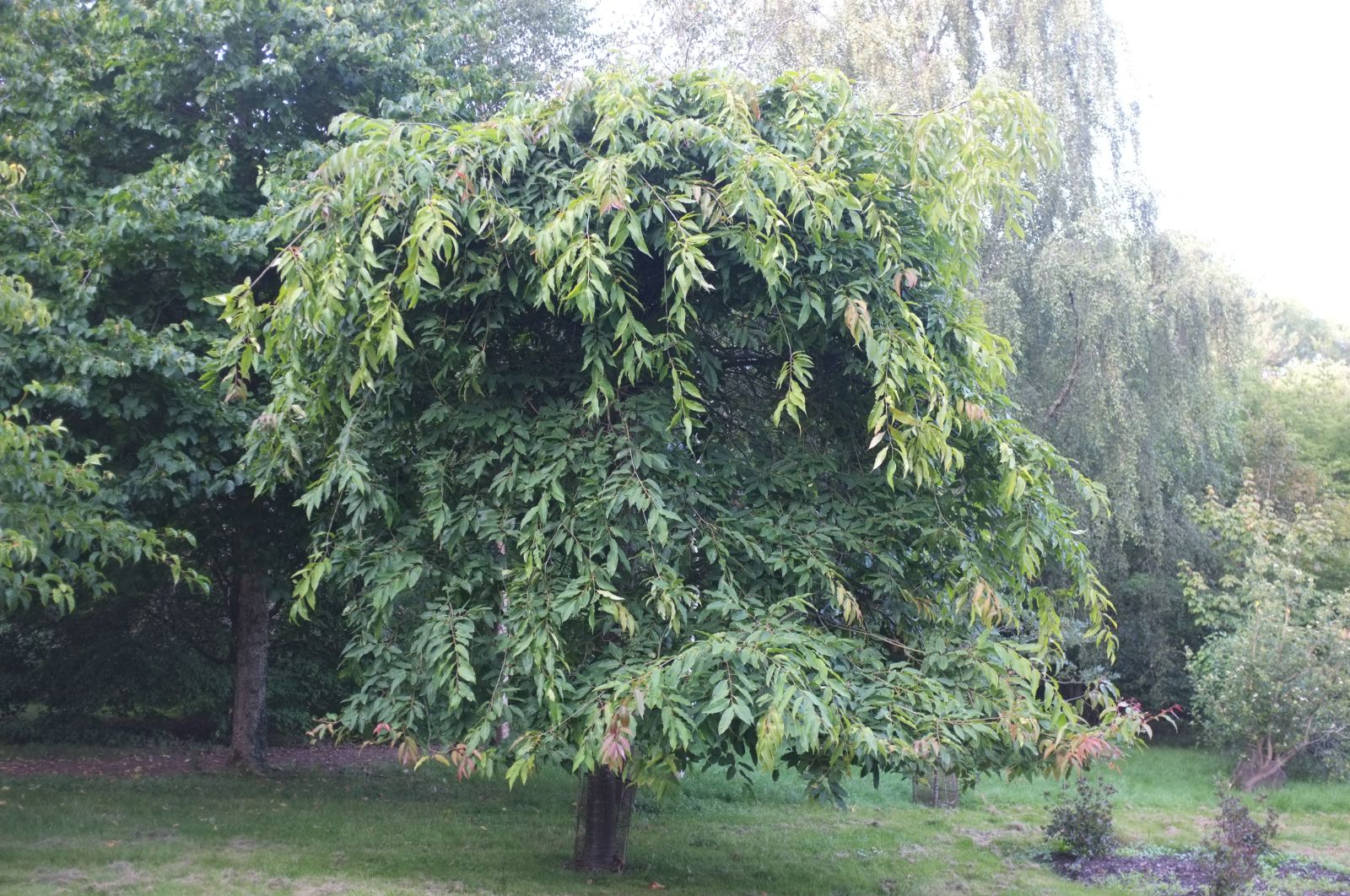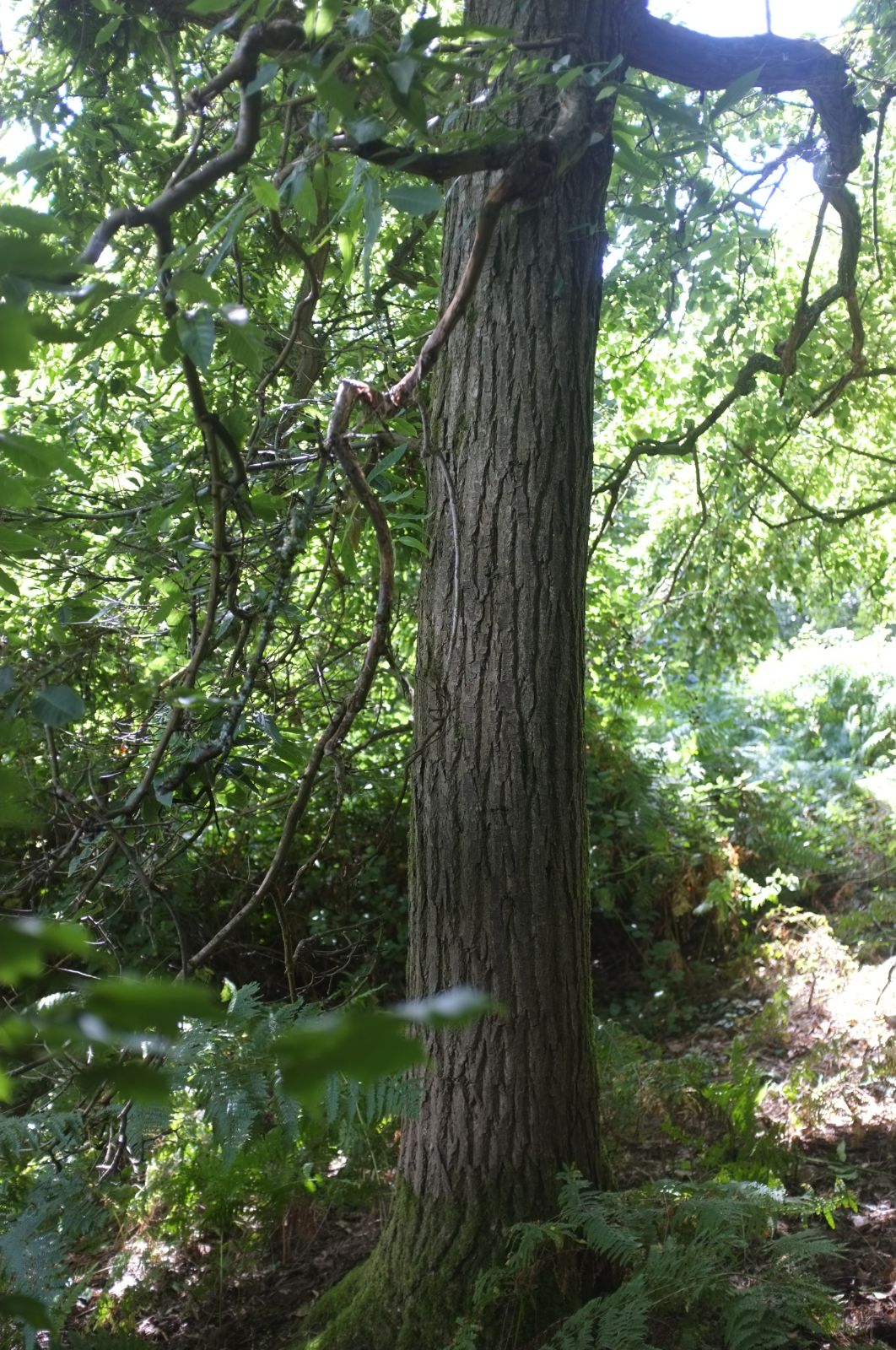Castanea henryi
Credits
Article from Bean's Trees and Shrubs Hardy in the British Isles
Recommended citation
'Castanea henryi' from the website Trees and Shrubs Online (treesandshrubsonline.
Genus
Synonyms
- Castanopsis henryi Skan
A deciduous tree 60 to 80 ft high, its trunk 6 to 9 ft in girth; young shoots dark-coloured and quite glabrous. Leaves oblong-lanceolate, wedge-shaped at the base, tapered at the apex to a long slender point, the margin set with bristlelike teeth terminating the primary veins; 4 to 8 in. long, 1 to 21⁄2 in. wide; green on both surfaces but rather paler below and quite glabrous except for a few whitish appressed hairs on the veins; veins in twelve to twenty pairs; stalk 1⁄4 to 1 in. long, glabrous. Male catkins 4 in. or more long, solitary in the leaf-axils. Nut solitary in the husk, cone-shaped, 1⁄2 to 3⁄4 in. wide at the base, enclosed in a prickly husk 1 in. wide. The fruits may be solitary or two or three in a cluster.
Native of China, where it is widely spread; according to Wilson it is common in the mountain woods of Hupeh and Szechwan. It was introduced by him to the Coombe Wood nursery in 1900, and a plant obtained from there is growing at Kew. Although hardy it does not promise to make a fine tree. The largest in the collection is forty-five years old and only 16 ft high.
From the Supplement (Vol. V)
This species is portrayed in Bot. Mag., n.s., t.882, from the plant at Kew mentioned on page 529. The largest specimen recorded grows at Abbeyleix, Co. Laois, Eire, and measures 30 × 33⁄4 ft (1985). In the Hillier Arboretum, Ampfield, Hants, it has reached 26 × 1 ft (1985).

